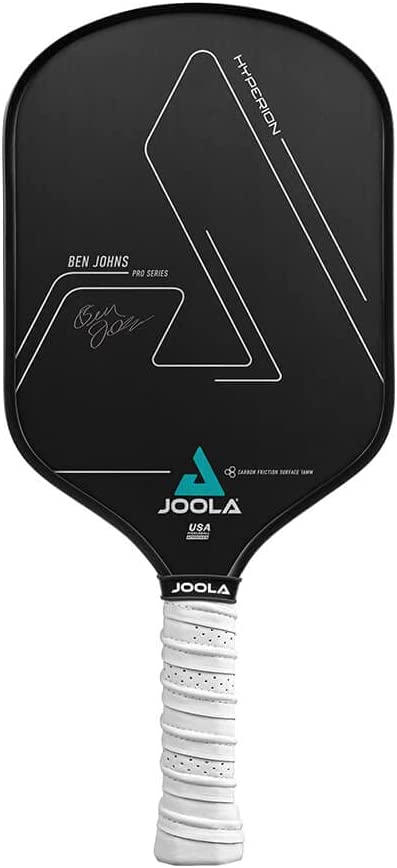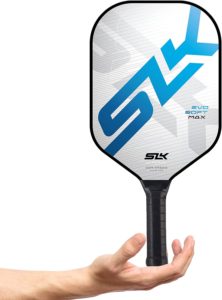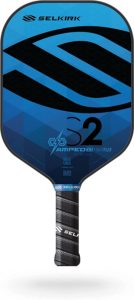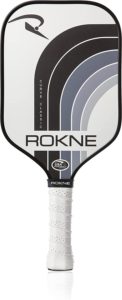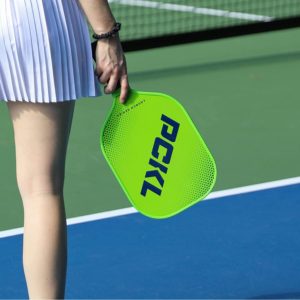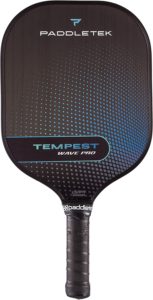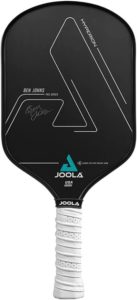Introduction
To get the most out of your pickleball experience, it’s important to have the right equipment, and one of the most critical components of your pickleball gear is your paddle. The sweet spot of a pickleball paddle is one of its most important features, and understanding what it is and how it works can help you make the most of your game.
IMPORTANCE OF THE SWEET SPOT IN PICKLEBALL
The sweet spot on a pickleball paddle is the area where the ball makes maximum contact with the paddle, resulting in the most controlled and efficient shots. Understanding the sweet spot and how to use it can greatly improve a player’s performance and accuracy in the game. This article will provide an in-depth understanding of the sweet spot in pickleball, including its definition, importance, and how to find and maximize it. The article will also explore the impact of paddle material and design on the sweet spot, as well as tips and techniques for improving it.
Understanding the Sweet Spot
What is the Sweet Spot?
The sweet spot is the area on a pickleball paddle where the ball makes the most contact and generates the least amount of vibration, resulting in the best control and accuracy. This sweet spot is crucial in pickleball as it allows players to produce more consistent and powerful shots. When I think of what hitting the sweet spot means, I think of “perfect contact” with the ball. After striking the ball and hearing that perfect pop sound, you know you hit your paddles sweet spot.
How the Sweet Spot Affects Gameplay
The sweet spot is a crucial factor in pickleball gameplay as it affects the accuracy and power of a player’s shots. When a player makes contact with the ball on the sweet spot, their shots will be more controlled and consistent, leading to better rallies and improved overall performance. On the other hand, if a player makes contact with the ball on an area of the paddle outside of the sweet spot, their shots may lack accuracy and control.
Factors that Determine the Size of the Sweet Spot
The size of the sweet spot is determined by several factors, including the material and design of the paddle, the player’s technique, and the size and weight of the ball used. Lighter and smaller paddles typically have smaller sweet spots, while heavier and larger paddles have larger sweet spots. In addition, the density and elasticity of the paddle material also affects the size of the sweet spot.
Finding the Sweet Spot on your Paddle
The sweet spot on a pickleball paddle is a crucial element for maximizing your performance on the court. In this section, we will explore tips and techniques for finding, testing, and marking the sweet spot on your paddle.
Tips for Finding the Sweet Spot
The first step in finding the sweet spot on your paddle is to understand what it is and how it feels. The sweet spot is the area on the paddle where the ball makes contact and results in the best possible shot. This spot is typically located near the center of the paddle face and is where you will feel the least amount of vibration when making contact with the ball.
Here are a few tips for finding the sweet spot on your paddle:
Hold your paddle with both hands, one hand on each end of the handle.
Tap the ball gently with different parts of the paddle face, starting near the center and working your way outwards.
Pay attention to the amount of vibration you feel in your hands when making contact with the ball.
The area with the least amount of vibration is likely the sweet spot.
Techniques for Testing the Sweet Spot
Once you have an idea of where the sweet spot is located, it’s time to test it further. Here are a few techniques for testing the sweet spot:
Try making different types of shots with the ball, such as forehands, backhands, and overheads, and pay attention to the feel and accuracy of each shot.
Place a small piece of tape on the paddle face near the spot you believe to be the sweet spot, then try making shots from various positions on the court.
Compare the feel and accuracy of shots made with and without the tape, as well as with and without the ball.
How to Mark the Sweet Spot on your Paddle
Once you have found and tested the sweet spot on your paddle, it’s important to mark it so that you can easily identify it in the future. Here are a few ways to mark the sweet spot:
Place a small piece of tape or a sticker on the paddle face near the sweet spot.
Use a permanent marker to make a small dot or mark on the paddle face near the sweet spot.
If you prefer, you can also use a specially designed sweet spot marker that adheres to the paddle face and indicates the exact location of the sweet spot.
The Impact of Paddle Material and Design on the Sweet Spot
When choosing a pickleball paddle, it’s essential to consider the impact that the material and design of the paddle can have on the sweet spot. The sweet spot is a critical aspect of pickleball gameplay and affects the power, control, and accuracy of your shots. Understanding the different types of materials used in pickleball paddles and how they impact the sweet spot can help you make an informed decision when selecting a paddle.
Types of Materials Used in Pickleball Paddles
Pickleball paddles are typically made of composite materials such as graphite, fiberglass, or a combination of both. Graphite paddles are lightweight and provide a high level of control, making them ideal for players who want to generate a lot of spin on their shots. Fiberglass paddles are more durable and provide more power, making them ideal for players who like to hit the ball with a lot of force.
In addition to composite materials, some pickleball paddles are made of wood or aluminum. Wooden paddles are the most affordable option and provide a classic feel, but they can be less durable and heavier than composite paddles. Aluminum paddles are lightweight and offer a high level of control, but they tend to be more expensive than composite paddles.
How Different Materials and Designs Affect the Sweet Spot
The size and location of the sweet spot on a pickleball paddle can vary based on the material and design of the paddle. Paddles made of graphite tend to have a smaller sweet spot, but the sweet spot is more concentrated, resulting in more control and accuracy. Fiberglass paddles, on the other hand, tend to have a larger sweet spot, providing more power.
In addition to the material of the paddle, the design of the paddle can also impact the sweet spot. Paddles with a concave surface tend to have a larger sweet spot, while paddles with a convex surface tend to have a smaller sweet spot. Additionally, paddles with a thick edge guard tend to have a larger sweet spot, while paddles with a thin edge guard tend to have a smaller sweet spot.
Factors to Consider when Choosing a Paddle Based on the Sweet Spot
When choosing a pickleball paddle, it’s important to consider your playing style and the type of shots you prefer to play. If you’re a player who likes to generate a lot of spin and control, a paddle made of graphite may be the best option. If you’re a player who likes to hit the ball with a lot of force, a paddle made of fiberglass may be a better choice.
In addition to the material of the paddle, it’s important to consider the size and location of the sweet spot. If you prefer to play shots with a lot of power, a paddle with a larger sweet spot may be the best option. If you prefer to play shots with a lot of control and accuracy, a paddle with a smaller sweet spot may be a better choice.
How to Improve your Sweet Spot
Practice Techniques for Improving Your Sweet Spot
Practice is key to improving your sweet spot in pickleball. One of the most effective ways to improve your sweet spot is by consistently playing with your paddle. Over time, you will naturally develop a better feel for where the sweet spot is located on your paddle and how to use it to your advantage.
Another way to improve your sweet spot is by practicing your shot placement. Try to hit the ball in different areas of the paddle to see how it affects the trajectory and speed of the shot. Pay attention to how the ball feels when you hit it in the sweet spot, and aim to replicate that feeling as you practice.
It’s also important to work on your grip, as a proper grip can greatly impact the location and effectiveness of your sweet spot. Experiment with different grip styles to see what works best for you and helps you get the most out of your sweet spot.
Modifying Your Technique to Maximize the Use of the Sweet Spot
In addition to practicing your shots and grip, there are other techniques you can use to maximize the use of your sweet spot. One way is to adjust your stance and body positioning. By positioning your body closer to the net, you can make it easier to reach the sweet spot on your paddle and deliver powerful shots.
Another technique is to vary the angle and speed of your shots. By playing with different speeds and angles, you can force your opponent to make mistakes and create opportunities for you to hit the ball with your sweet spot.
How to Maintain Your Paddle for Optimal Sweet Spot Performance
To get the most out of your sweet spot, it’s important to properly maintain your paddle. This includes cleaning it regularly, storing it properly, and checking for any damage or wear and tear. If your paddle is damaged, it can greatly impact the location and effectiveness of your sweet spot, so it’s important to address any issues promptly.
In addition, you should consider getting your paddle professionally re-strung every few years to ensure that it remains in top condition. A well-maintained paddle will not only perform better, but it will also last longer, helping you to get the most out of your sweet spot for years to come.
Conclusion
The sweet spot on a pickleball paddle is a critical component of your game, and understanding what it is and how to use it can help you make the most of your pickleball experience. By hitting the ball in the sweet spot, you can generate more power and control, make more accurate shots, and avoid injury. Whether you’re a beginner or an experienced player, taking the time to understand the sweet spot on your paddle can help you improve your game and get the most out of your pickleball experience.

